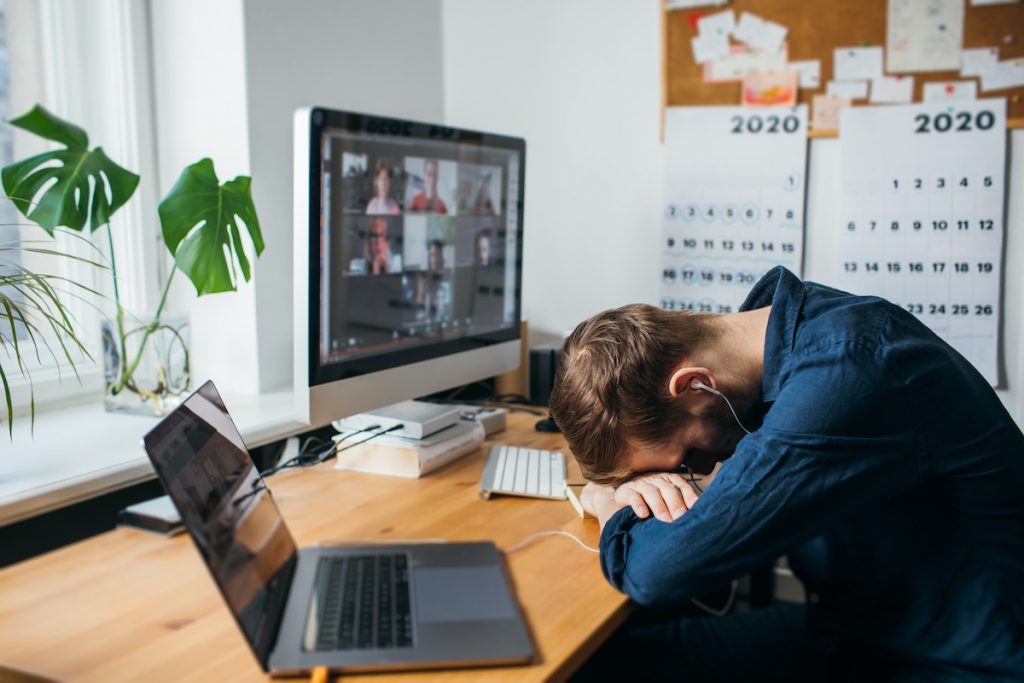
Ever get off of a video call and feel like it wiped you out?
You’re not alone — as people around the world left offices last March and replaced in-person meetings with videoconferences from spare bedrooms and kitchens, they started noticing that videoconferencing made them feel tired.
The phenomenon was dubbed Zoom fatigue, after the popular videoconferencing software.
As the Covid pandemic enters its second year, with many people still working and attending school remotely, researchers from Stanford and other schools are starting to closely study how videoconferencing affects people on a psychological level.
There are four main ways that videoconferencing could contribute to feelings of exhaustion, wrote Jeremy Bailenson, founding director of Stanford University’s Virtual Human Interaction Lab, in a paper published Wednesday:
- Videoconferencing forces users to make extended eye contact
- Nonverbal signals like nodding require more effort
- The little box where users see themselves is unnatural
- Users are forced to sit in one place.
“Going from, on average, a handful of video conferences per week to, in some cases, nine or 10 a day, that’s a really new thing in media use history,” Bailenson said.
The possible explanations aren’t specific to Zoom, and apply to other videoconferencing software, too, but the researchers used the Zoom brand name because it was recognizable and became a verb during the pandemic.
In Bailenson’s opinion, the biggest contributor to Zoom fatigue is the little box during a videoconference that allows users to see themselves. Lots of research has looked at what happens when people see themselves in the mirror, and suggests that constant self-evaluation leads to negative emotions.
Also, videoconferencing software often displays faces so large that it tricks your brain into thinking they’re directly in front of you, in your personal space. That can trigger some deep-seated instincts.
“We know from a physiological standpoint, that if somebody is really close up to you, and they’re looking at you, that you’re about to mate, or you’re about to fight, from an evolutionary standpoint,” Bailenson said.
How to fix the problem
The next step for these researchers is to gather data to validate or reject some of these theories. Eventually, they want to make evidence-based recommendations on best practices, like whether certain meetings should be a Zoom or a phone call.
Researchers including Bailenson have developed a 15-question scale for evaluating Zoom fatigue, and are currently collecting data from study participants across the web.
In the meantime, Bailenson said in an interview that there are some easy fixes that he’s been working on that people can try at home now to improve their videoconferencing experience:
- Hide self-view. On Zoom, you can right-click the video then press “Hide Myself.” Other videoconferencing software has similar options.
- Shrink the Zoom window to make other people a little bit smaller. Make it a third of the screen instead of maximized, Bailenson suggests. Or you can place your chair a little farther away from the webcam.
- Spend half an hour tinkering with your setup ahead of an important meeting. Check the lighting, figure out where to place an external camera, and make sure your chair is comfortable and at the right height. Maybe try placing your laptop on a stack of books to raise its height.
- Turn off your camera and take a five-minute audio-only break during a long meeting to give yourself a chance to move around.
- Set cultural norms with your co-workers that it’s OK to turn off the camera sometimes.